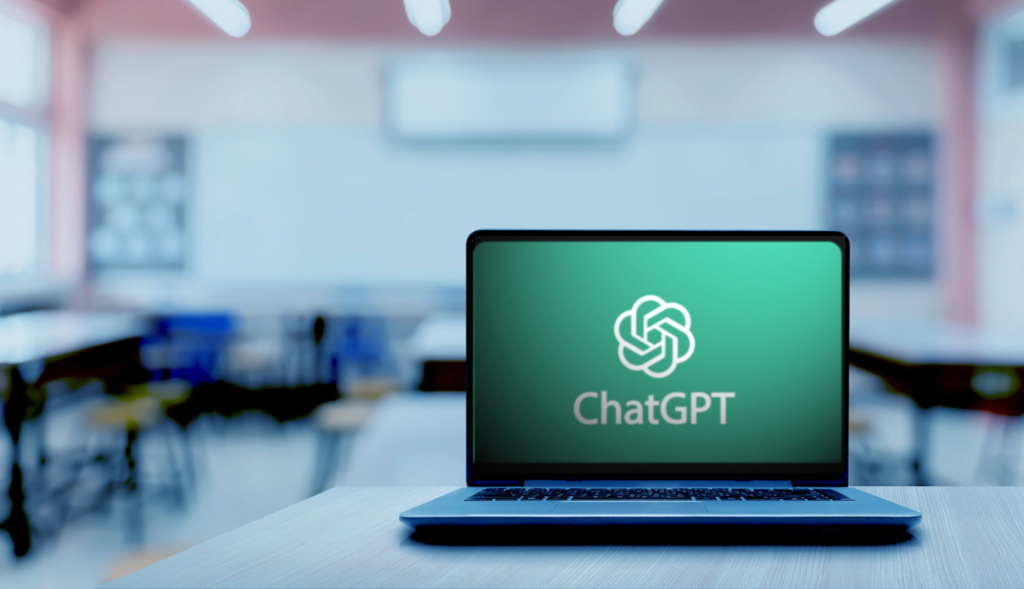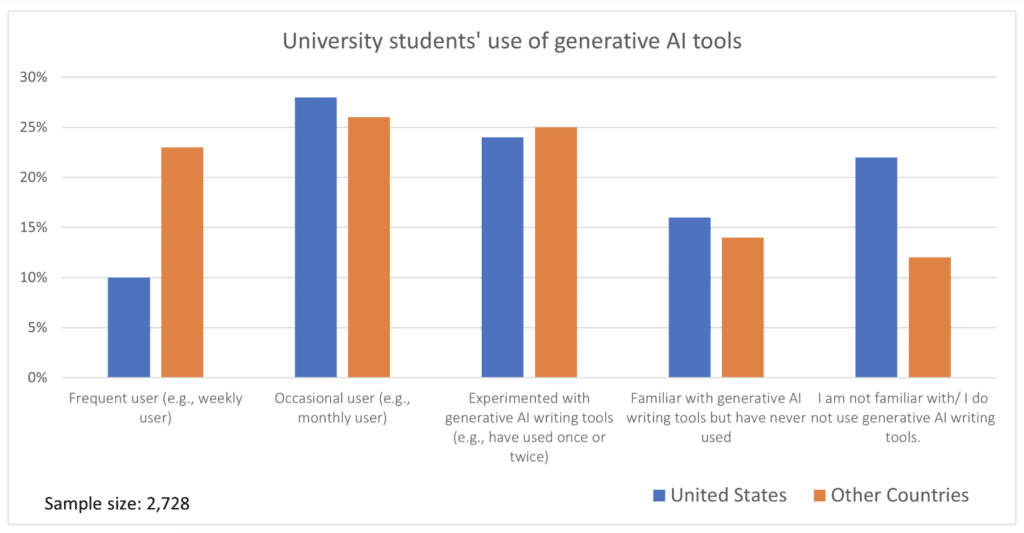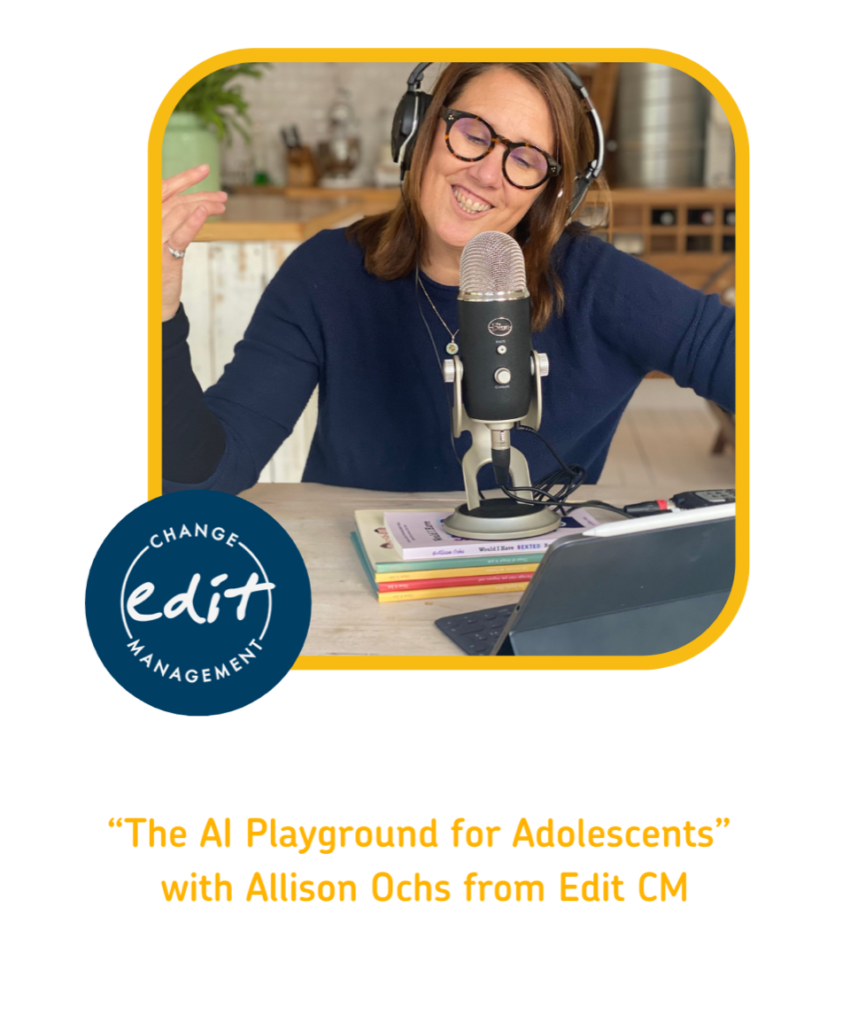Large Language Models (LLMs) have brought Artificial Intelligence (AI) to the home and the classroom. Educators and students were caught off-guard. The impact on education is widely debated but currently unknown. The problem is straightforward, but the scale of AI’s legacy on education is yet to be determined.
Key Questions:
Research on the benefits and risks associated with student use of ChatGPT and other AI Chat bots is hard to come by. There are a lot of people providing advice, but few reliable studies – or rather studies are just now getting underway. While the technology encapsulated in tools such as OpenAI’s ChatGPT and Google’ Gemini holds potential for personalised learning, everyone agrees it is important for them to be used appropriately.
On the positive side, LLMs offer quick answers to an unlimited number of questions, can provide essay writing assistance and coding support, and can help to create useful study guides. Yet, as the University of Illinois points out, misuse of LLMs can lead to plagiarism and concerns for academic integrity (1). Not to mention that LLMs can contain factual errors, especially when used uncritically. The possibilities are vast, but responsible use and awareness of limitations are crucial for students navigating these new learning tools.
How can ChatGPT be integrated into education to enhance learning outcomes?
There is of course no easy answer. We are still learning. And there is a lot to learn. Despite risks, some educators see huge potential in using artificial intelligence chatbots to enhance teaching and learning.
In terms of uptake, early evidence suggests that students increasingly consult with ChatGPT to seek clarification on concepts, to ask questions related to assignments, or to receive additional explanations for topics covered in class.
If used appropriately, this approach can help students reinforce their understanding and provide additional information or practice. Yet, as we saw, caution is definitely in order. LLMs do “hallucinate”. Google’s Gemini (formerly named Bard) defines hallucination as an output which
- May be factually incorrect
- May be nonsensical, i.e. the output doesn’t make logical sense or follow a coherent structure or
- Is disconnected from the input prompt, i.e. the LLM’s response doesn’t address the question or prompt it was given.)
Invariably therefore, students will have to learn to use LLMs discriminately, fact-checking as they would with any other source.
How often do students and educators already use ChatGPT and other LLMs?
Data for 14–18-year-olds is hard to come by, but a large survey of more than 5,000 university students and academics across 11 countries indicates the U.S. is slower to adopt generative AI than its global peers. A November 2023 study by Anthology, a leading provider of software for educational institutions, finds that 38% of US students and 47% of those in other countries reported using generative AI tools either “frequently” or “occasionally” (2) (see chart below).
Interestingly, University leaders in the U.S. are also slower to embrace generative AI. Only 26% report using AI tools frequently or occasionally, in contrast to their counterparts in the United Arab Emirates (54%) and Singapore (49%), who reported much higher use of generative AI tools. Switzerland was unfortunately not included in this study, so we are unable to report the figure.
Which education providers are embracing Large Language Models (LLMs)?
Much like the New York Times, textbook publishers Pearson and McGraw Hill have not allowed ChatGPT or other AI Chat bots to train models on their proprietary materials. Instead, they have used their textbooks content to train their own models, which are then incorporated into a suite of learning apps.
Chegg, a provider of online tutoring whose value skyrocketed during the pandemic (and then crashed back down), has likewise developed its own AI bot that it has trained on its ample dataset of questions and answers. Similarly, Khan Academy recently launched Khanmingo – an AI powered teaching and learning assistant, providing a powerful tool for both students and teachers. Confirming that LLMs trained by education providers constitute an exceptional opportunity. “Students want content from trusted providers,” argues Kate Edwards, chief pedagogist at Pearson in a recent interview with the Economist on the subject of AI in education. (3)
Other education providers are certainly not wasting any time in developing exciting new tools. Take Anthology’s “Blackboard Learn” which comes with its own specially trained “AI-Design Assistant”. (4) Developed for instructors, the AI Design Assistant uses Artificial Intelligence to streamline the educational material building process, giving teachers and university professors a head-start in creating course materials.
So how does it work? The instructor inputs course name, description, or learning objectives, and the AI Design Assistant helps with module building tasks which the instructor can add to or edit as they go along, including
- Course structures
- Module titles, descriptions and content
- Images aligned to course content
Once the material has been reviewed, modified, and approved, the AI Design Assistant analyses course content and generates test questions and prompts for authentic assessments.
Clearly, the idea here is NOT to substitute the instructor, teacher or Professor, but to allow them to generate up to date modules faster and – of course – to concentrate on what they do best—teach and coach students!
What lies ahead for AI Chatbots in education?
The future seems characterised by expertise and focus, with educational chatbots trained on proprietary or specialised educational materials. The most promising trajectory suggests that AI Chatbots will thrive in their application to specialised educational materials.
A great example is in language education. AI Chatbots can be designed to provide personalised language lessons, interactive conversation practice, and instant feedback, catering specifically to language learners’ individual needs and proficiency levels.
Professionally designed Interactive Learning Materials are another example. These are digitally available resources designed to teach a specific learning outcome. They can contain any combination of text, images, audio, video – including screencasts, animations, self-test questions and other interactive activities. By leveraging specially trained Large Language Models (LLMs) they can create interactive and dynamic content, generate personalised quizzes, and provide instant feedback.
According to Gavin O’Leary of CluSolu.AI, a provider of private LLMs, Interactive Learning Materials will increasingly be used to generate interactive scenarios, simulations, or games that incorporate educational content into engaging activities. Their prediction is that interactive learning materials will prove to be particularly effective for subjects that benefit from experiential learning (i.e. learn by doing), such as languages, sciences, and mathematics. (5)
How can parents support their children in using ChatGPT for learning at home?
As always, the best solution is for parents to encourage open communication and to engage in conversations about the responsible use of ChatGPT. If you are a user of ChatGPT yourself, you may want to discuss your favourite prompts with your child – they may find them very useful ! A simple prompt when revising a text for example is to ask ChatGPT : “Check for clarity and conciseness” followed by your sentence. ChatGPT is very good at streamlining sentences, making such prompts a great way to improve writing skills.
In terms of homework, it may be good to set guidelines. Establish clear rules on how ChatGPT can be used in relation to homework, set time limits for tasks and content, and sync with any guidelines you may have received from your school. For younger children, monitoring early interactions, and showing them how AI Chatbots can get information wrong also helps to ensure responsible use.
Finally, encouraging critical thinking has become increasingly important in this age of misinformation. Knowing which sources (Wikipedia, Textbooks) are trustworthy and which ones need to be verified (random websites or AI Chatbots) is equally important.
Teaching our children to question and verify information is absolutely essential, as is promoting a healthy scepticism and an analytical mindset. ChatGPT is a fantastic research and editing tool, not a substitute for textbooks learning or for diligently focusing on assigned homework.
(1) Risk of LLMs in Education, University of Illinois Urbana Champaign https://publish.illinois.edu/teaching-learninghub-byjen/risk-of-llms-in-education/
(2) “Anthology Survey Reveals University Students and Leaders Slow to Adopt, but Cautiously Optimistic about AI”, November 12, 2023 https://www.anthology.com/news/anthology-survey-reveals-university-students-and-leaders-slow-to-adopt-but-cautiously
(3) “AI can transform education for the better”, The Economist, Business Schumpeter Column, January 11, 2024 https://www.economist.com/business/2024/01/11/ai-can-transform-education-for-the-better
(4) “Empower Instructors with AI, Blackboard Learn from Anthology”
https://www.anthology.com/ai-design-assistant
(5) “The Future of Education: LLMs in Personalized Learning and Development”, Gavin O’Leary, LinkedIN, February 12, 2024
https://www.linkedin.com/pulse/future-education-llms-personalized-learning-gavin-o-leary-p90ve/







